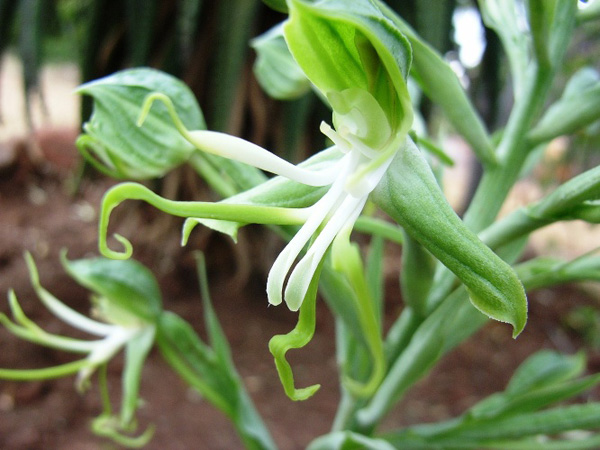|
Botanical name |
Bonatea antennifera |
|
Other names |
Bonatea speciosa, var. antennifera |
|
Family |
Orchidaceae |
|
Dimensions |
Terrestrial orchid with green and white flowers, sometimes over 50 cm in height; dormant in winter |
|
Description of stem |
Erect light green flower stalk with decreasing leaf size upwards |
|
Description of leaves |
Grey-green leaves that encircle the stem and taper to a sharp point, mildly undulating |
|
Description of flowers |
Green and white flowers on the single stem forms the atteactive inflorescence that sometimes topples when many flowers are produced; the top sepal is a pointed hood over the protruding other flower parts, dominated by two green, curved sepals, long white terete petals and a dangling lip |
|
Description of seed/fruit |
|
|
Description of roots |
Flat, elongated tuber |
|
Variation |
Seems to be very stable in form and appearance? |
|
Propagation and cultivation |
Tuberoids can be planted in pots in a suitable orchid mix, 2 cm below the surface; water only during the growing season, about August when new growth appears; repot every 5 years; semi-shade |
|
Tolerances |
|
|
Uses |
Garden plant |
|
Ecological rarity |
Not threatened |
|
Pests and diseases |
Little seems to affect the plants in habitat (observed in the Magaliesberg) |
|
Other |
Closely related to B. speciosa; there are over 20 species in the Bonatea genus, many of which occur in southern and tropical Africa |
|
Location |
Grows in semi-shade under trees and shrubs in drier environments, often in thorn savannah |
|
Distribution |
Gauteng, Northwest, Mpumalanga and Northern Cape provinces |
|
Country |
South Africa; Zimbabwe |


